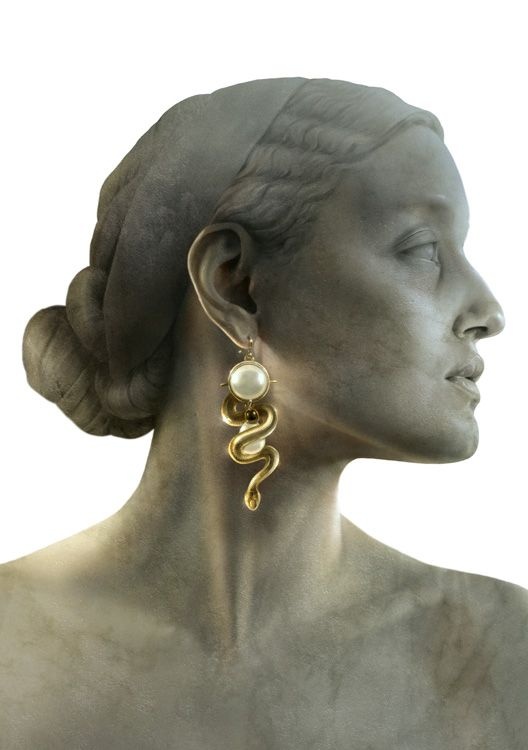
ROMAN RELATIONS:
Or had she? With the powerful Roman Emperor as her lover, one brother permanently removed and Arsinoë captured and transported to Rome in chains to be paraded as part of Caesar’s victory celebrations, Cleopatra’s seat on the throne seemed secure. But, despite the fact that the Egyptian Queen was now carrying his child, Caesar made Cleopatra co-ruler of Egypt with her remaining brother, and soon-to-be husband, the 12-year-old Ptolemy XIV. What Cleopatra felt about the arrangement is unknown, but it can be assumed that she wasn’t keen to share power with yet another sibling.
Cleopatra’s son, Ptolemy Caesar (known as Caesarion), was born in June 47 BC but was never officially acknowledged by Julius Caesar. Instead, the Emperor’s grandnephew Octavian (later Emperor Augustus) was named his heir. Nevertheless, mother and child joined Caesar in Rome, where they lived until Caesar’s assassination in March 44 BC.
Caesar’s death was a milestone moment for Cleopatra. With the dictator dead, she was able once again to pursue her quest for sole sovereignty in Egypt. Within months of Caesar’s demise, Cleopatra’s brother-husband was also dead - probably poisoned on her orders - and the Egyptian Queen was free to co-rule with her three-year-old son, whom she intended to support as Caesar’s successor. It seemed no one could stand in her way. No one, that is, but her remaining sister, the ambitious Arsinoë, who had been banished to the Temple of Artemis in Ephesus, in modern-day Turkey.
A DYNASTY IN CRISIS:
Back in Rome, in the wake of Caesar’s death, a dispute over the succession to the Roman leadership had broken out between Octavian and the Roman General Mark Antony. By 41 BC, the leadership had been split, with Antony governing the eastern region and Octavian the west. Needing money to subdue his enemies in the Parthian Empire (now Iraq), Antony soon turned his sights to the wealth of Egypt and summoned Cleopatra to meet him in Tarsus, in modern-day Turkey.
Despite initially refusing his demands, Cleopatra eventually sailed to Tarsus, arriving in style, dressed as the goddess of love. “She herself lay all along, under a canopy of cloth of gold,” wrote Plutarch. “The attraction of her person, joining with the charm of her conversation, and
the character that attended all she said or did, was something bewitching.”
As she had with Caesar before, Cleopatra deployed her considerable charms to seduce Antony, a man who, with Ephesus in his control, held the key to removing Arsinoë – the final threat to her rule. The pair became lovers and, in 37 BC, husband and wife – Cleopatra would go on to bear Antony three children. Keen to please his Egyptian Queen, Antony agreed to orchestrate the death of Arsinoë and, in 41 BC, Cleopatra’s last remaining sibling was dragged out of sanctuary and murdered on the steps of the Temple of Artemis.
But Cleopatra’s long-awaited triumph over her rival family members was to be short-lived. Within ten years of Arsinoë’s death, Rome had waged war on Egypt and Cleopatra was forced to surrender to Octavian, taking her own life just nine days later. The age of the Ptolomies was over.
CLEOPATRA (The History Maker) (P2)
Posted on at



